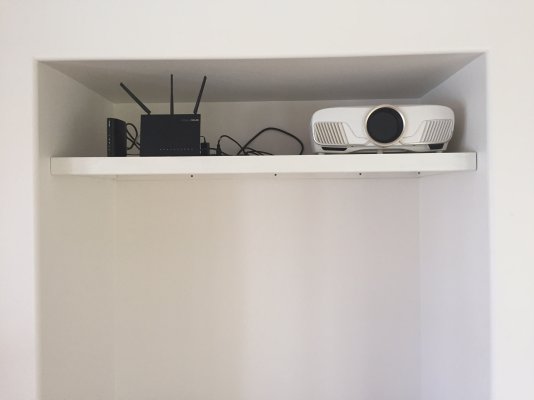mitchjav
Recycles dryer sheets
All,
Have the opportunity to pre-wire a new home and looking for suggestions.
The only thing I'm sure of is where I want cable outlets for the TV and that I want to pre-wire the Great Room TV so the wiring to the cable box and Bluray player is behind the wall the TV is mounted on. Don't think I need to the same for any of the other TVs.
The other option being offered is the ability to hardwire Ethernet connections - don't know if this is necessary. In our current home, everything is Wifi (computers, TVs) and the Cable Modem acts as a Wifi router. We stream content from the smart TVs and it works fine - we don't stream content from our computers to our TV very often (only if we occasionally use a streaming service that's not offered via the smart TV or cable company). Wondering if hardwiring any of the TV's or computers will provide real advantages in terms of speed, stability or features
Last, what about phone connections? Don't think we need any - we use the cable company service now and have a Panasonic phone that connects directly to the modem with extra handsets around the house. We might do the same or abandon land-line altogether. Thoughts?
Have the opportunity to pre-wire a new home and looking for suggestions.
The only thing I'm sure of is where I want cable outlets for the TV and that I want to pre-wire the Great Room TV so the wiring to the cable box and Bluray player is behind the wall the TV is mounted on. Don't think I need to the same for any of the other TVs.
The other option being offered is the ability to hardwire Ethernet connections - don't know if this is necessary. In our current home, everything is Wifi (computers, TVs) and the Cable Modem acts as a Wifi router. We stream content from the smart TVs and it works fine - we don't stream content from our computers to our TV very often (only if we occasionally use a streaming service that's not offered via the smart TV or cable company). Wondering if hardwiring any of the TV's or computers will provide real advantages in terms of speed, stability or features
Last, what about phone connections? Don't think we need any - we use the cable company service now and have a Panasonic phone that connects directly to the modem with extra handsets around the house. We might do the same or abandon land-line altogether. Thoughts?

